
Blog
DeFEET your HEEL PAIN!
1. If it HURTS, stop doing it! Pain is actually your body’s way of telling you that something is wrong – listen to it! Putting pressure on a (painful) damaged muscle/tissue/bone = further damage = no improvement = ongoing pain. It’s as simple as that.
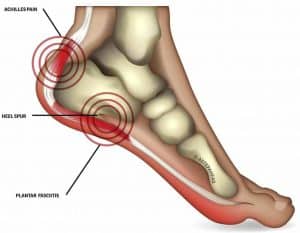
2. Nothing will change unless YOU change it. You’ve been wearing the same shoes and trying the same stretches and whatever else google has advised you since your pain started and you’re still in pain. Consult a practitioner that specialises in heel pain – not all podiatrists and practitioners do! Look for a practice with a proven track record with heel pain – different practitioners do things very differently and get very different results!
3. STICK to the plan! “It’s only when people venture off the main path in the forest that they get lost and chased through the forest in the night.” As practitioners we don’t tell you things to try and make your life difficult and play ‘let’s test if anyone will actually do this’. We do this because we KNOW it works and see it working all day every day, for those who stick to it. If we could make it easier, we would! But taking shortcuts hasn’t produced good results for our patients, and you came to us to get you pain-free.
4. Understand what is happening! Make sure you completely understand: what your condition is, what causes it, what aggravates it, WHY you are having the treatment you are and what the treatment is actually doing to and for your feet. If you don’t see a purpose to doing something, you are a lot less likely to stick to it. Not being fully informed about your condition can create uncertainty about your treatment. Ask all the questions, ask them as many times as you need, and let your practitioner help you to understand. If you get a generic answer along the lines of “It’s plantar fasciitis and you need these very hard orthotics” – Our number will be at the bottom!
5. Finally, DON’T give up! Whether you’ve just started your journey to being pain-free or have tried multiple options from different practitioners with no success, very seriously, don’t give up! We are often people 3 or 4th opinion – some have been to physiotherapists, specialists, GP’s and other podiatrists – if they haven’t had success with you, sadly you’re not alone! I have the privilege of seeing the pain levels of my patients decreasing every week until the pain is gone. Every foot is different, the causes of heel pain are different, and when this is correctly analysed, diagnosed and treated, amazing things can happen. Our treatment is VERY different!
These are my top 5 because I see these so often! It’s actually fairly unusual to see anyone who isn’t struggling with at least one of these points. But rest assured – heel pain can be defeated, you don’t have to keep battling it and letting it limit your activity and you can be completely pain-free. We have patients who regularly travel from all across Sydney NSW and even interstate to see us! Its not unusual for us to be the last of a long line of other practitioners you may have seen. Come and join our ever-growing team of pain-free patients – we’d love to help you too!
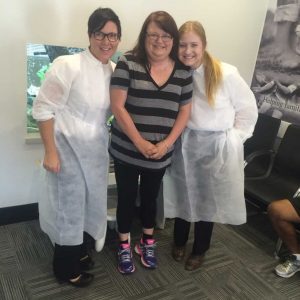
Dr Nina to the right and Shendi on the left with our patient Kimberley who beat heel pain!
A Step Ahead Foot + Ankle care
Penrith, St Marys
and soon to come to a suburb near you!

Blog
“Ok so I went to the guys down the road.” Say Lee my Triathlon loving patient says to me. “It’s just really sore here under my second toe, they said it was a Neuroma but they have been trying to fix this for weeks, no months and it’s just not getting better” !
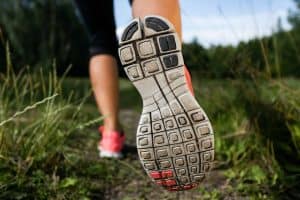
Callous on my foot, Numb toes and this V developing – A runners trifecta!
The pain that Lee was chatting about was not a surprise to me and nor what I noticed on her foot. She had developed a small V between her 2nd and 3rd toe, had pain under the ball of her foot and had developed a small amount of callous around the same area. Yup I’d seen this many times before!
If she wore tight shoes, high heels or bike shoes in her case she found the pain got worse. If she ran a lot while it may have got numb for a while at the end of the race it got sore! Over time she noticed the split or V sign getting worse.
On seeing this her GP suggested Metatarsalgia, which for years has been a reasonable diagnosis and what most would suggest this may be, However it’s NOT. The “other guys down the road” AKA another group of Podiatrist, had diagnosed a Morton’s Neuroma, again this is a common misdiagnosis. Often radiologists will under ultrasound call this a Neuroma because these two conditions can look strikingly similar. The scan or ultrasound the Radiologist undertakes is only as good as the information provided to them though your diagnosis in the clinic get it wrong and so will they!
After a bit of pushing and prodding, and watching Lee walk again on our Video walk / run analysis equipment I was now sure what we had BUT I wanted to get another set of eyes to have a look so off she was sent to see a particular radiologist we use all the time. He sees our patients very specifically because he is overly experienced in looking at FEET!
On the report there it was “A plantar plate disruption between the 2nd an 3rd Metatarsal heads.”
So we started Lee on a series of Deep connective tissue massages with our Podiatrist, renewed her orthotic insoles and arranged for her to get some new trainers on our advice.
6 weeks later and BOOM Lee was about to start running again! “I won’t be going elsewhere again” she said and this time I believe her!

BB’s looking super clever in Bright red Red Foo frames! No BB doesn’t wear glasses!
Brenden (AKA BB)
A Step Ahead Foot + Ankle Care

Blog
Standing occupations and what happens to feet!

Busy looking people!
Most of us stand or walk everyday but amongst us there is a proportion of our population that do it more than others. We are talking to you Nurses, Builders, Hairdressers, Concreter’s, Teachers, process line factory workers and Check out operators and, and, and and! You guys know more than anyone what a toll standing for hours can do to your feet. Below is a very quick description of some of the more common problems you may have suffered and things we as foot specialists see day in day out and help to treat.
Plantar plate tears / injuries / dysfunction
Is this you? (What it can look like)
• Do you have pain in the ball of your foot? Is it worsened when you stand or possibly wear shoes?
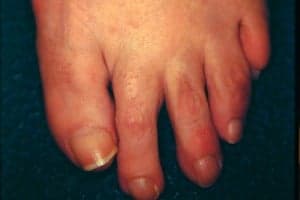
• Have you developed the feeling of a lump or a little pea under the ball of your foot?
• Is there dry hard skin (callus) developing under the ball of your foot?
• Have you noticed a small (or large) gap developing between your toes that resembles “V”? This is often the 2nd and 3rd toes, but it maybe any?
• How did it happen? Do you remember tripping falling and developing a pain in your forefoot (ball)? NO you DO NOT have to have had an accident!
• It may have developed slowly over time with no memory of a painful incident.
We see this many times a week and sadly we often see it misdiagnosed and therefore treated as the wrong problem. It can be misdiagnosed as a Mortons Neuroma or at times when people aren’t sure of things (and for many years) some practitioners diagnose Metatarsalgia .
Remember “Grandma’s feet? You know the ones where her big toe had formed a bunion and the next two toes popped up and crossed over each other? Yes those feet you wished you would never get, and swore you would never let it happen to you! Guess what without having it treated pronto –they soon may be yours!
Correct Diagnosis
A big part of this problem is misdiagnosis! You cant diagnose this if you don’t see a stack of it. As a clinic we will always send you for a Ultrasound BUT not just to anyone! Some radiologists commonly miss this and sadly are not familiar with the condition. Make sure when you are referred to get a diagnosis the radiologist knows and has diagnosed Plantar plate tears before!
Clinically your podiatrist should be able to see this quickly but it can be tricky and some Pods are more equipped for general nail care. Choose someone who sees this regularly! ASK!
Treatment
Strong supportive footwear is a key here! Shoes should be solid on the base not bend or twist. Cushioning this condition with fancy air bubbles WILL NOT fix this!
Orthotics (Custom made) – Well-made and designed orthotics will assist poor foot posture and correct alignment. They cannot come out of a packet and fix this, they need to be designed to help address this.
Soft tissue therapy – This condition is often slated straight to surgery STOOOOOOOOP! Unequivocally this condition has a good prognosis with conservative therapy trail first! We see this condition many times a day and get great success. Now we realise not all Pods do soft tissue like we do (Come on pods get to it!) but this is really necessary to go hand in hand with your Orthoses. Orthoses alone WILL NOT fix this. If your Pod wont do soft tissue then find a physio who will!
Surgery. Yes if this condition progresses to an unresolvable tear there is a need for us to refer you to an orthopaedic surgeon for surgery. SURGERY is A LAST resort! On most occasions surgery can be avoided with early quality intervention. As a note we worry about the amount of these we see that have unnecessarily sent to a surgeon. Many times way too early and before conservative care I has been trailed correctly these patients (you) are sent to surgery!
Heel pain
Is this you? (What it can look like)
• Pain on the first few step in the morning or pain on rising after sitting (Or Both)
• Pain Located in the heel area, under the heel where the slightly fatty area is, or pain in the Achilles running up the back of the lower leg.
• Pain may initially subside in first stages after first few steps
• Pain worsened by long period on your feet may become painful after walking or activity for reasonable periods of time.
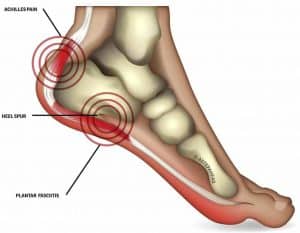
Correct Diagnosis
The first thing your friends will tell you is “It’s a Heel spur”. Sadly life is not that simple and where once medicos lumped this into one general diagnosis (Sadly some still do). We recognise that this set of symptoms may be one of many conditions. Plantar fasciitis, fatty pad syndrome, Achilles tendonitis, and even Abductor Hallucis tendonitis can contribute to this pain. Find a practitioner who knows the difference! Again not all practitioners see these things a lot.
At times simple clinical signs are enough, but diagnosis maybe needed via radiology such as diagnostic ultrasound. Xray will show you a spur (Yes I know) but the bony spur is NOT the problem.
Treatment
Strong supportive footwear is a key here yet again ! Shoes should be solid on the base not bend or twist. Cushioning this condition with fancy air bubbles WILL NOT fix this!
Orthotics (Custom made) – Well-made and designed orthotics will assist poor foot posture and correct alignment. They cannot come out of a packet and fix this; they need to be designed to help address this.
Soft tissue therapy – Deep connective tissue massage, will be useful in all the above conditions. Again be wary of people simply telling you that orthotics will get rid of this. They go hand in hand but are not the only answer.
Shockwave – As a clinic we have been using shockwave for about 3 and a half years. As we are “early adopters” of new therapies, this is not as common to other practitioners but the use of this therapy is very handy and growing in popularity. We find this takes half the time that Deep connective tissue does to relieve this in combination with the other therapies.
Stretching – there are some very specific stretches that can be used for this group on conditions and for a large group of individuals this will help. Don’t be discouraged if these don’t work. Look above there are more options and solutions.
Tibialis Posterior dysfunction.
(Super flat feet / Fallen arches)
Is this you? (What it can look like)
• Pain in and around the arch. May be worse after walking or standing
• Discovering you have a “Fallen arch”
• Noticing one arch is lower than the other.
• Pain fatigue during or after walking. Pain on standing on toes ,climbing ladders.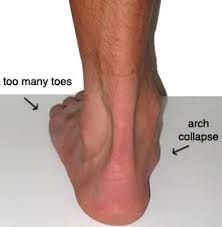
Correct Diagnosis
This should be fairly easy to diagnose. The lowering of one arch, as opposed to the other, in combination with pain located in the arch. Should lead to an easy diagnosis. Diagnostic Ultrasound maybe used and your Podiatrist (us) can refer you off for this.
Treatment
Strong supportive footwear is a key here yet again and now again ! Shoes should be solid on the base not bend or twist. Cushioning this condition with fancy air bubbles WILL NOT fix this! (Can you see a pattern)
Orthotics (Custom made) – Well-made and designed orthotics will assist poor foot posture and correct alignment. They cannot come out of a packet and fix this; they need to be designed to help address this. IN particular without orthoses this condition WILL NOT get better! Get them and GET THEM QUICKLY!
Soft tissue therapy – Deep connective tissue massage, will be useful in all the above conditions. Again be wary of people simply telling you that orthotics will get rid of this. They go hand in hand but are not the only answer.
Braces – In the initial stages having braces specifically designed to support the arch will support and make steady the arch. It works well at first but is really a short term solution. Look towards orthoses and soft tissue.
Surgery. Yes if this condition progresses to a tear there is a need for us to refer you to an orthopaedic surgeon for surgery. On most occasions surgery can be avoided with early quality intervention.
Bunions
Is this you? (What it can look like)
• Your big toe starts to point out towards the smaller toes and is no longer straight
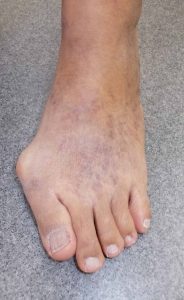
• Pain may develop around the big toe joint. Making it difficult to walk or stand
• Many people can have a bunion and not have any pain.
• The toe may begin to twist as well
Correct Diagnosis
On most occasion a qualified health practitioner should be able to diagnose this simply by looking at the clinical signs, however you may require a xray if you are considering surgical intervention.
Treatment
Strong supportive footwear. (Wow we just wont stop talking about this supportive footwear will we!!!) Shoes should be solid on the base not bend or twist. Cushioning this condition with fancy air bubbles WILL NOT fix this! (Can you see a pattern)
Orthotics (Custom made) – Well-made and designed orthotics will assist poor foot posture and correct alignment. This problem is often a result of a variance in the structure of your feet Yet again these cannot come out of a packet and fix this; they need to be designed to help address this.
Soft tissue therapy – Deep connective tissue massage, will be useful in all the above conditions. There is a problem with the balance of two muscle in your feet. This can also lead to another condition that may damage other muscles and soft tissue structure, the plantar plate rupture or dysfunction. Again be wary of people simply telling you that orthotics will get rid of this. They go hand in hand but are not the only answer.
Braces – Often called night splints there is some research that suggests these can be really helpful. I (Brenden) am a little dubious! This relies on you being super diligent on putting the splint on night after night. I always argue that on a Friday night after a busy week and a catch up with the girls after work it’s not likely you’ll want to pop this on before heading to bed. This is where the success of these will fall down BUT if you are super diligent, give them a try.
Surgery. Yes if this condition progresses there is often a need or want for us to refer you to an orthopaedic surgeon for surgery. This surgery over years has increased in its success. See a orthopod who does this all the time. Why ? Because ensuring that the person does this and other foot surgeries often increases the chance of success. If they are also doing shoulders knees hips wrists etc etc they simply cant be as use to doing this surgery as someone who does this every day.
The HARD sell !
At A Step Ahead foot + Ankle care we see several patients a day with this condition. We have patients that travel literally hundreds of kilometers to seek our help –which is really lovely! Our clinics are set up quite specifically to treat patients with muscle injuries and mechanical problems with their feet. We have invested hundreds of thousands of dollars into equipment and the latest technology to help us, help you- beat your pain.
Our principal Podiatrist Brenden Brown is recognized as one of Australia’s leading experts in Podiatry (No really). A past President of the Australasian Podiatry council he is regularly asked for his opinion in the media, appearing regularly on television shows like the Today Show and Magazines like Men’s Health.
It would be a pleasure to help you beat your foot pain.
We are located in Penrith and St Marys in Sydney’s Western suburbs. You can contact us on 47322007 or 96732987 we hope you will……. See that wasn’t so bad was it!
Copyright 2015. We take our copyright quite seriously. If you reproduce this without seeking our permission we will be very upset. So upset we will contact our solicitor and instruct them to deal with you. Big hairy scary with a steely glare enormous shoulders and a square jaw she will take you to task! We will instruct her to take all necessary measures to recompense us for your infringement on our intellectual property and copyright!
If you would like to reproduce this and are happy to acknowledge our company and share a link to our website then we will most likely be happy to allow you to reproduce this, but hey why not ask!

Blog
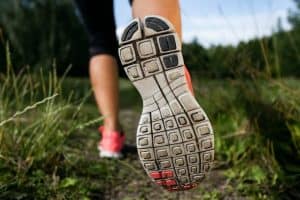
A Step Ahead Walking Club. Every Thursday in Penrith
Every Thursday in Penrith the A Step Ahead Walking Club hits the road! We walk around Penrith in order to keep “happy healthy and active.” No races, no competition just a steady pace, the odd chat and everyone walks at their own level. So how did it start?
In 2013 as a clinic we saw a sudden influx of women who wanted to know how to make sure their feet were healthy and QUICK! We discovered a number of these ladies were participating in a walk to raise money called the “Weekend to end women’s cancer” Not only were they walking but they were walking 60 KM!!! no wonder they wanted their feet fit!
When 2014 came about and with our new understanding of what these ladies were to undertake we agreed to become partners with the “Weekend to end women’s cancer” and began training walks. Everybody is welcome on our walks NO you DO NOT have to be undertaking the “Weekend” nor a patient to come on our training walks. It has grown to become more than that. Our clinic motto is “helping families to stay happy healthy and active” and walking for exercise fit this bill to a tee!
We walk for for an hour each Thursday night from 630pm meeting each week in a different starting point in Penrith, call for details. However on the first Thursday of each month we meet at our practice in Penrith at 6pm. Where participants can chat to our Podiatrist ask any questions they may have and have a free gait (Walk) assessment if they’d like or just get some footwear advice (Nope we DO NOT sell shoes). We set off for the walk again at 630pm.
So if you’d like to get a walk in each week, stretch your legs and keep fit please come and join us. For security reasons we ask that walkers who wish to join us call our clinic on 9673 2987 and we will call you back about location details. We will NEVER use your number for marketing purposes – for us its not about that, its about keeping people fit 🙂
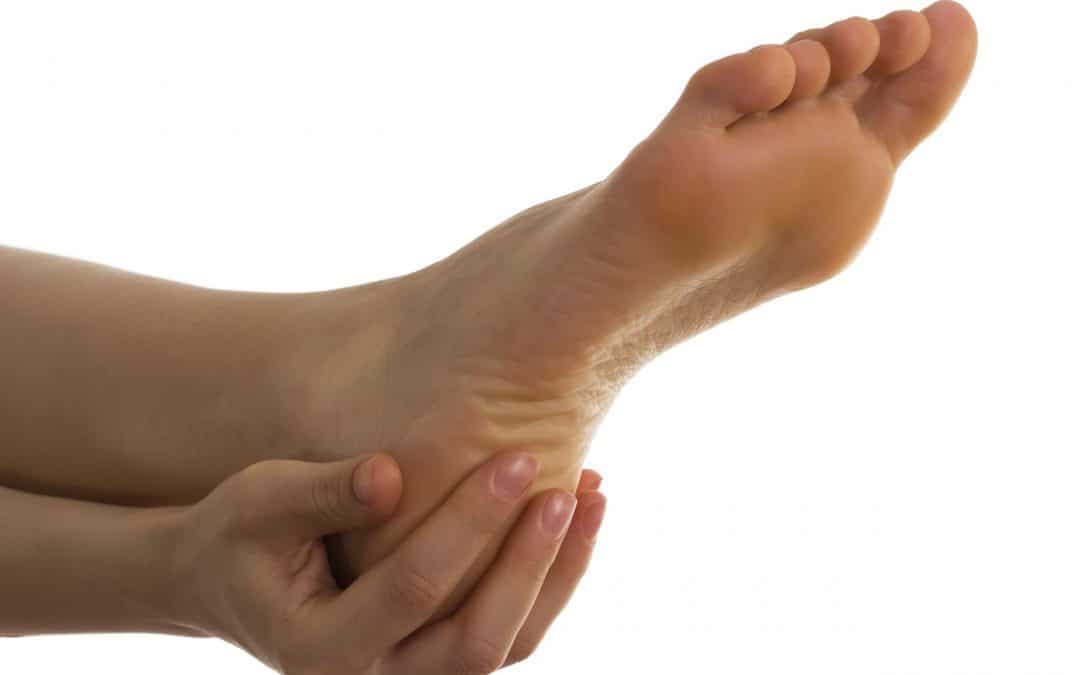
Blog, Uncategorized
1. You decide to go it alone and NOT get professional advice.
Of all the people we see, a large proportion of them have never had any care or professional advice. Quotes like “I just thought it would go away” or “A friend told me what they did to get rid of the pain and I just tried that”. Most times it doesn’t! You will increase your chance of beating heel pain, significantly by getting a professional opinion. Professional advice and treatment costs money. Yes some people find this expensive however others find it invaluable. It depends on how much you really want to get rid of your very sore heels?
2. You wear thongs because your feet are sore
Wearing thongs, Croc type shoes or even bare feet for many people make their feet feel better initially but all our experience tells us you are doing more damage. The pain you feel days later not necessarily at the time. You are welcome to argue this point as much as you like, while you continue to hobble …………
3. You get advice and then choose which bits you use.

Great work on getting advice now it’s time to take it ……yes ALL of it. When a care plan is developed for you, if you choose only the bits you like to hear and the easy bits, you will end up failing to get better. Your Podiatrist should work with you as a patient to establish the best way to relieve you of your pain. They should speak to you about what shoes are best for you. What treatment will get you better quickest, including stretching, therapy to relax the soft tissue and possibly orthotics. Now choosing NOT to do some of the suggested treatment universally ends up with patients not getting better. Our Podiatrists do all that and more, does yours?
4. You bought hard rigid orthotics from a Podiatrist.
Our experience tells us that rigid hard orthoses on most occasions irritate the heel and the arch region adding to your discomfort. We have over the years collected many pairs of rigid orthotic from patients who give them to us in frustration after finding they have hindered rather than help. Secondly if this is the only therapy you were given, with the exception of a couple of possible stretches then we would suggest to you that there is more to getting rid of your pain than this – ask the question “So how is this rehabilitating my damaged soft tissue” ?
5. You continue to do loads of exercise
Einstein is once said to have defined Madness as “Continuing to do things exactly the same and hoping for a different result”. As practitioners we are probably sportier than others and so we truly do understand your hopes to continuing to exercise. But in truth unless you make some form of change its unlikely you will get better. There are other options available which can help you to stay fit like rowing, weight training and alike. Let’s work together to see what we can allow you to keep up your health goals. If your practitioner is telling you there is no need to change then we would suggest the first change you make is the practitioner!
6. You choose a practitioner who does not understand heel pain.
So your GP says they will fix your heel pain? Your Physio who is treating your shoulder says the same and the Podiatrist you see, who works a day a week at your local GP clinic and cuts your toe nails, says they will fix it no problem. Who do you choose?
Your heel pain is not simple its complex and for you it’s really sore! Choose someone who see’s and treats heel pain regularly. Choose someone who is passionate about making sure that they help you on the way to getting you better. All the people above are probably very good at what they do, but they most likely won’t end up helping you beat your pain!
How can we help
At A Step Ahead foot + Ankle care we see approximately 8 to 12 heel pain patients a day. We have patients that travel literally hundreds of kilometres to seek our help – Which is really lovely! Our clinics are set up quite specifically to treat patients with heel pain. We have invested hundreds of thousands of dollars into equipment and the latest technology to help us, help you- beat heel pain.
Our principal Podiatrist Brenden Brown is recognised as an expert in Podiatry. A past President of the Australasian Podiatry council he is considered an expert in the area of Foot health, appearing regularly on television shows like the Today Show and Magazines like Men’s Health.
It would be a pleasure to help you beat your heel pain.
We are located in Penrith and St Marys in Sydney’s Western suburbs. You can contact us on 47322007 or 96732987 we hope you will.

A Step Ahead Foot and Ankle care






















 Dr Brenden’s White paper report on the “6 Reasons You Won’t Beat Heal Pain” outlines what’s stopping you from beating this and tips on how to stop it in its tracks!
Dr Brenden’s White paper report on the “6 Reasons You Won’t Beat Heal Pain” outlines what’s stopping you from beating this and tips on how to stop it in its tracks!